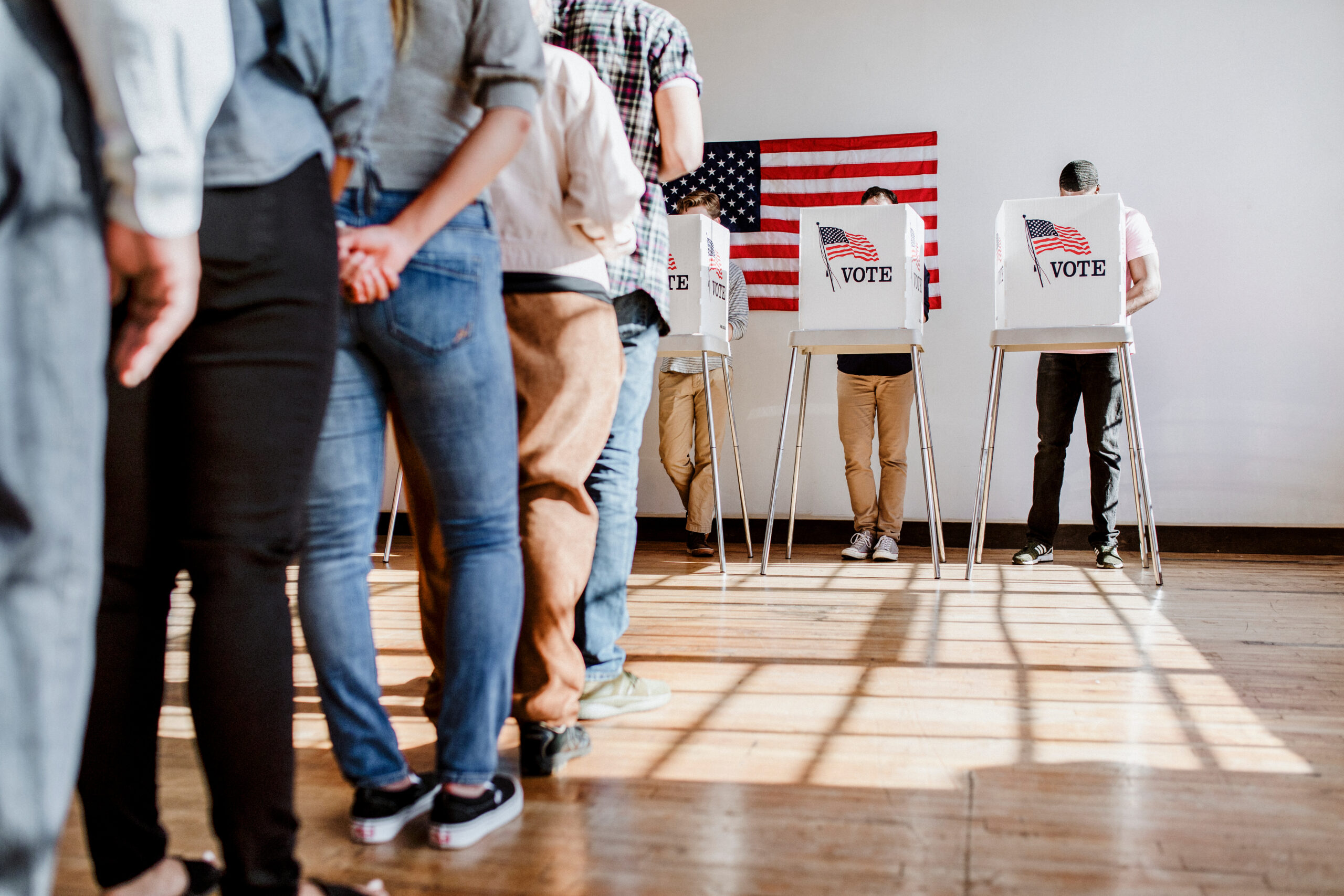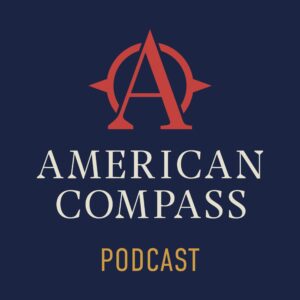

A realignment that focuses the Republican Party on pro-worker economic policy is well underway
RECOMMENDED READING
Executive Summary
In August 2023, American Compass partnered with YouGov to survey 1,000 Republican voters. We found:
- GOP voters have abandoned the traditional Republican Party focus on tax cuts, deregulation, and free trade.
- Most GOP voters emphasize a newer set of cultural challenges like transgender activism, woke corporations, and race-related indoctrination; most also select illegal immigration as a top challenge.
- On economic issues where significant disagreement exists on the Right, the center of gravity has shifted quickly: Fewer than 30% of voters still emphasize Old Right issues while more than 40% give preference instead to New Right issues like globalization, financialization, and worker power.
- GOP voters overwhelmingly prefer the New Right’s worker-first framing of key economic challenges to the Old Right’s business-friendly approach.
- 90% reject the idea that “America keeps getting richer and the government keeps providing more generous support, so it is easier than ever for a family to achieve middle-class security,” and say instead that “middle-class life has gotten more expensive and wages have not kept up, so it has gotten harder.”
- 85% see employer complaints of labor shortages as “a good thing, because it will force employers to offer better jobs and pay higher wages, spreading more prosperity to workers.”
- On many key issues, GOP voters have swung to positions that directly oppose the market fundamentalism still common in major conservative institutions.
- 77% support tariffs to boost manufacturing and 78% say “the government should provide support to ensure that America is a leader in advanced technologies like semiconductors.”
- 57% choose the view that “Wall Street investors are getting rich doing things that weaken our economy” over one that “Wall Street investors play an important role in strengthening our economy.”
- 41% believe that “unions are a positive force that help workers and reduce corporate power,” not yet a majority but a remarkable share for a party that has been staunchly anti-union for decades.
- On fiscal issues, GOP voters retain their traditional skepticism of any policy that might raise taxes and of new spending, even targeted toward working families.
Top Issues for GOP Voters
The survey began by asking voters to “think about various challenges facing America” and “consider which ones, among those listed, you think are most important.” It offered twelve challenges, selected to include three that have traditionally provided the core of the Republican Party message (on taxes, regulation, and trade), three that have only recently become central to conservative debate (on globalization, Wall Street, and worker power), three that have been and remain consensus issues among conservatives (on immigration, education, and family), and three that have emerged recently as consensus cultural issues (on transgenderism, critical race theory, and “wokeness”).
The survey presented these in random order, asking “Of the following, which do you think are the most important challenges facing America? Please select at least 2 and up to 5.”
[“Old Right” Challenges]
- Tax rates on corporations and job creators are too high
- Regulation is discouraging business growth and innovation
- Tariffs on China are raising prices and interfering with free trade
[“New Right” Challenges]
- American manufacturing has been gutted by globalization and trade with China
- Workers have little control over their jobs and can’t do anything about it
- People make more money working on Wall Street than building real businesses
[“Consensus” Challenges]
- Illegal immigration undercuts American workers and lowers their wages
- Not enough people are getting married and having kids
- Our education system only works for people who are able to succeed in college
[“Cultural” Challenges]
- Transgender activists are trying to erase the differences between boys and girls
- “Woke” corporations are forcing their values on Americans
- Schools, businesses, and even the military are telling Americans that the country is racist
Respondents could also choose, “None of these are important challenges.”
Overall, voters were overwhelmingly concerned with cultural challenges. Illegal immigration and American manufacturing were also selected by at least half.
As a follow-up question, the survey asked voters to assign a weighting to those issues they had selected as most important. “Politicians like senators and presidential candidates have to decide where they want to focus their attention. For those issues you chose as most important, think about how you would want politicians to spend their time. Imagine you had 100 points to spread across the issues, where giving two issues the same number of points would mean you want politicians to spend equal time on each. Giving one issue 20 points and another issue 10 points would mean you want twice as much focus on the first one. Allocate the 100 points:”
Unsurprisingly, the cultural issues most often selected are therefore also those on which voters want to see politicians focus most time and attention. Overall, voters allocated 44% of their points to the cultural challenges, 23% to consensus challenges, 19% to New Right challenges, and 14% to Old Right challenges.
Segmenting Voters
The cultural challenges, along with immigration, remain the most important for all segments of GOP voters. They are the top issues for all demographic groups and also the top issues for those who choose any other particular issue. For instance, among voters who choose tax rates as a top challenge, 37% also choose regulation but 50% choose woke corporations and 55% choose transgender activists. Among those who choose regulation, 23% choose tax rates but 63% choose woke corporations and 68% choose transgender activists. On those issues, unsurprisingly, politicians within the party have all lined up behind the same positions.
On economic issues, as observers of Republican politics might note, a more divergent dynamic is clear. Voters divide into the following segments:
- Strong New Right: Voters who allocate more of their points to New Right issues (globalization, financialization, worker power) than to any other category of issues.
- Lean New Right: Voters who allocate the most points to cultural or consensus issues, but then allocate more points to New Right issues than to Old Right issues.
- Neutral: Voters who allocate the same number of points to New Right and Old Right issues (most often because they allocate none to either).
- Lean Old Right: Voters who allocate the most points to cultural or consensus issues, but then allocate more points to Old Right issues (taxes, regulation, free trade) than to New Right issues.
- Strong Old Right: Voters who allocate more of their points to Old Right issues than to any other category of issues.
More than 40% of GOP voters are now Strong or Lean New Right—the largest block within the party and 50% larger than the Strong or Lean Old Right bloc. The blocs retain similar focus on cultural and consensus challenges but have diametrically opposed emphases on economic issues.
Who Are These Voters?
While some variations exist, the New Right bloc is larger than the Old Right bloc regardless of demographic grouping. It is larger across all classes, both genders, major racial categories, age groups, and ideologies. Lower- and working-class voters do skew further New Right, as do women and moderate voters.
Finding a group that skews Old-Right requires combining demographic categories, in this case gender and class. The one group where Old Right voters predominate is upper-class men. By contrast, upper-class women skew particularly heavily toward the New Right.
Issue Polling
After identifying challenges most important to voters, the survey also asked detailed questions about a variety of specific issues, in each case providing a short summary of arguments on each side and then asking respondents to select which view was closer to their own. The results show a Republican Party still committed to traditional views on taxes and spending but already shifted heavily toward a New Right perspective on many issues and shifting toward it on others.
Middle-Class Security
Question: Americans have different ideas of what it means to have economic security in the middle class, and different views of how hard that is to achieve. Thinking about changes in the economy over the past several decades, some people say that America keeps getting richer and the government keeps providing more generous support, so it is easier than ever for a family to achieve middle-class security. Others say that middle-class life has gotten more expensive and wages have not kept up, so it has gotten harder. Which is closer to your view?
Labor Market
Question: In the past couple of years, many employers have complained that they cannot find enough workers to hire. Some people call this a “labor shortage” and say that it is a major problem, because businesses can’t grow and their costs go up, leading to higher prices for consumers. Other people call this a “tight labor market” and say that it is a good thing, because it will force employers to offer better jobs and pay higher wages, spreading more prosperity to workers. Which is closer to your view?
Higher Education
Question: As the cost of higher education has risen, federal student loan programs have offered students the funding that they need to attend the college of their choice. Some people say that such open-ended government support is good, because attending college is the key to opportunity in America and no one should miss out because they cannot afford it. Other people say that such open-ended support is bad, because it allows colleges to keep raising prices without consequence and leaves students burdened with too much debt. Which is closer to your view?
Tariffs
Question: A tariff is a tax placed on a product imported from a foreign country. Some people support imposing tariffs on imports because they say it will reduce imports and encourage businesses to make more things in America and employ more American workers. Other people oppose imposing tariffs on imports because they say it interferes with free trade and raises prices for consumers. Which is closer to your view?
Industrial Policy
Question: Last year, Congress passed the “CHIPS and Science Act,” which allocated more than $50 billion from the federal government to help semiconductor (computer chip) companies build new factories in the United States. Some people say this policy is necessary because leadership in semiconductor technology is important and the United States is falling behind other countries like China and South Korea that do help companies to build factories. Other people say this policy is unnecessary because the free market is better than the government at deciding which investments a company should make. Which is closer to your view?
Wall Street
Question: Investment banks, hedge funds, and private equity firms raise hundreds of billions of dollars every year, which they use to generate profits from buying and selling companies and making stock market trades. Some people say these activities are important to the health of America’s economy and help it grow, creating better jobs and higher wages. Other people say these activities often ruin companies and treat the stock market like a casino, allowing some people to get rich while leaving everyone else behind. Which is closer to your view?
Unions
Question: This question is about private-sector unions, which represent workers at businesses. It is not about public-sector unions, which represent teachers, police officers, and other public employees. Some people argue that unions are a positive force because they give workers a say at work, improve wages and benefits, and combat corporate power. Other people argue that unions are a negative force because they interfere with worker freedom, harm employers, and raise prices for consumers. Which is closer to your view?
Tax Cuts
Question: Many Republican politicians sign a pledge promising to oppose any tax increase. Some people say this is good, because taxes are too high and government is too big. Other people say this is bad, because the federal government will need to raise more money in order to pay for important priorities and reduce the deficit. Which is closer to your view?
Family Policy
Question: Under a policy called a “family benefit,” the government would give money to working families every month to help them afford the cost of raising children. For instance, a family could receive $800 per month (close to $10,000 per year) if they had two young children, so long as they had also earned at least $10,000 per year on their own. Some people say this is a good idea because raising a family is hard and not enough people are doing it. Other people say this is a bad idea because it is not the government’s job to send money to families. Which is closer to your view?
ABOUT THE DATA
The American Compass 2023 GOP Voter Survey was conducted by YouGov between August 11 and 17, 2023, with a representative sample of 1,000 Republican voters. YouGov interviewed 1,096 respondents who were Republicans who voted in the 2022 election, who were then matched down to a sample of 1,000 to produce the final dataset. The respondents were matched to a sampling frame on gender, age, race, and education. The frame was constructed by stratified sampling of a subset of Republican election voters in the 2022 Cooperative Election Study (CES) sample with selection within strata by weighted sampling with replacements (using the person weights on the public use file).
The matched cases were weighted to the sampling frame using propensity scores. The matched cases and the frame were combined and a logistic regression was estimated for inclusion in the frame. The propensity score function included age, gender, race/ethnicity, years of education, and region. The propensity scores were grouped into deciles of the estimated propensity score in the frame and post-stratified according to these deciles.
The weights were then post-stratified on a two-way stratification of education (4 categories) and age (4 categories), and a four-way stratification of gender, age (4 categories), race (2 categories), and education (4 categories) to produce the final weight.
In analysis of the results, “Class” is defined by education and income:
- “Lower” (N=147): less than a four-year degree and household income below $30K; or did not report household income and do not have a high school diploma.
- “Working” (N=370): less than a four-year degree and household income $30K–$80K; or did not report household income and have either a high school diploma or some college but no degree.
- “Middle” (N=362): four-year degree or more and household income $30K–$80K; or household income $80K–$150K; or did not report household income and have a 2-year or 4-year college degree.
- “Upper” (N=98): household income above $150K; or did not report house- hold income and have a post-graduate degree.
Respondents with a four-year college degree or more but household income below $30K are excluded from analyses using the “Class” variable.
Recommended Reading
GOP Primary Voter Poll Shows Pro-Worker Realignment Is Well Underway
As Republican presidential primary candidates prepare to meet tonight to debate the future of the GOP, a new poll shows that their voters have abandoned the party’s traditional focus on Read more…
Talkin’ (Policy) Shop: GOP Voters and the Realignment
On this episode, Oren and Chris discuss the results of our new poll of GOP primary voters, which shows an economic realignment is well underway.
A New Coalition, if You Can Keep It
As the pundits, campaigns, and lawyers continue to unpack this election, there are a few things we know for certain.











